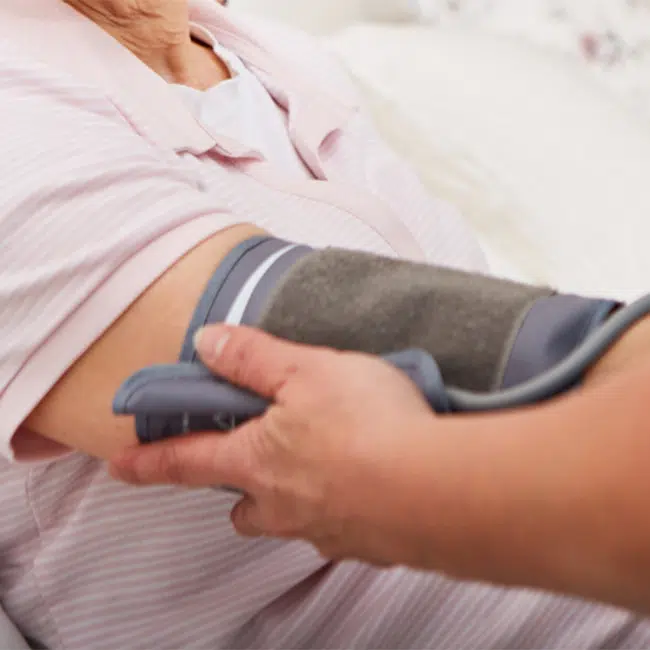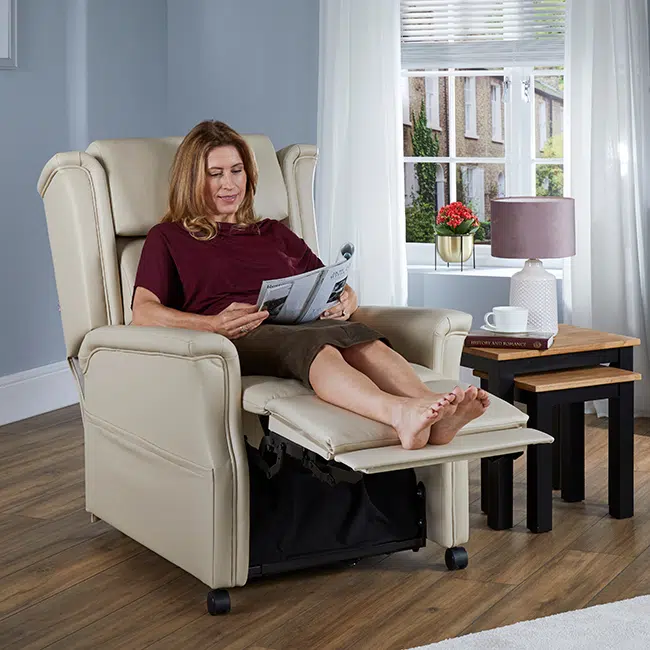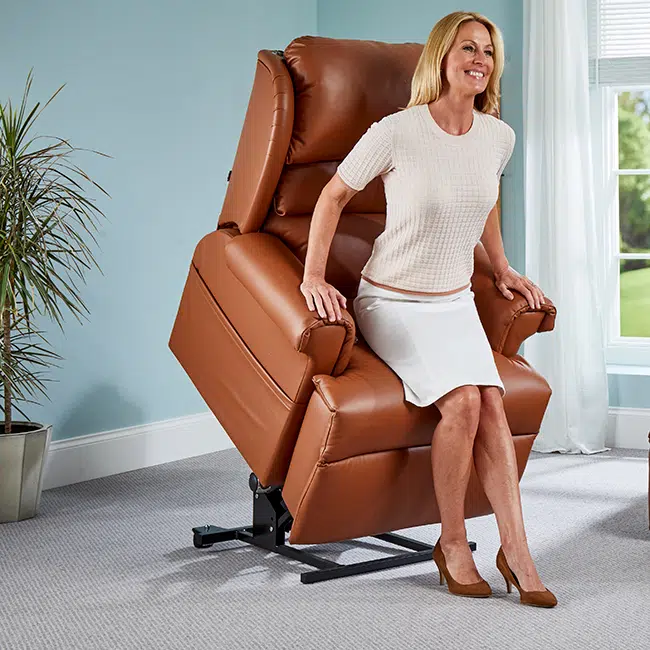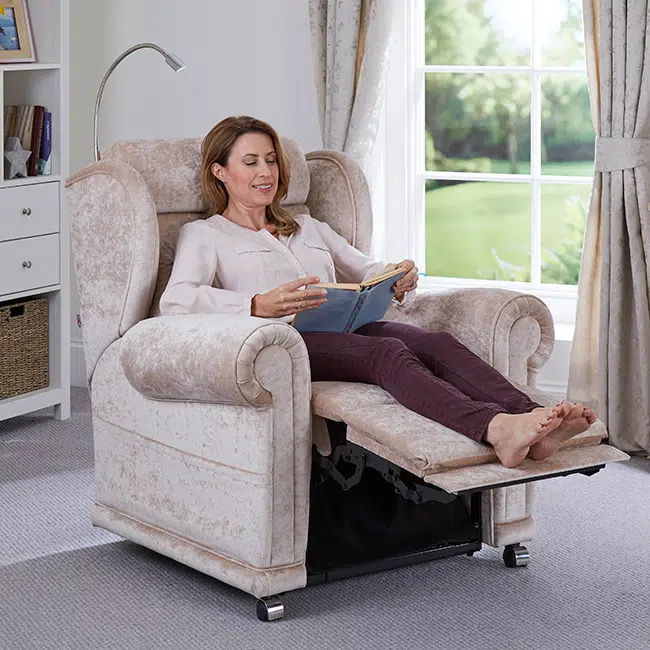3 Ways Rise and Recline Chairs Help Fluid Retention
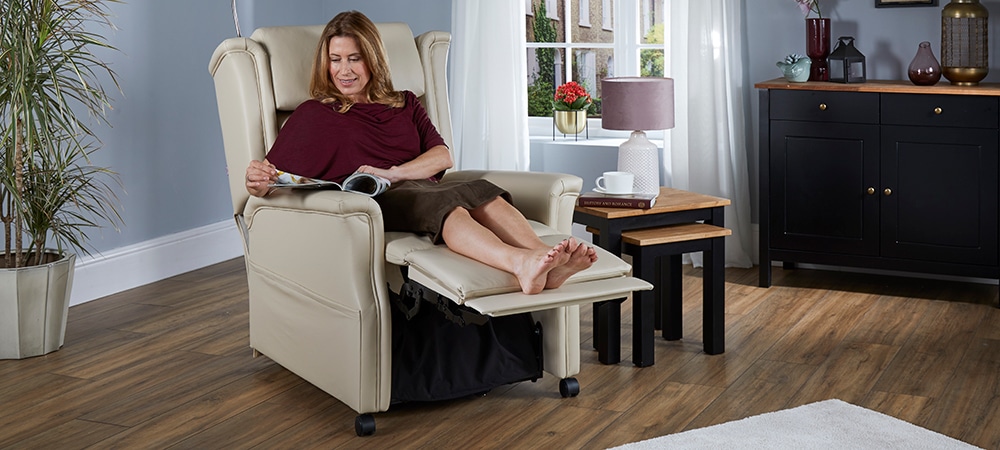
If you suffer from fluid retention, Rise and Recline Chairs could provide the perfect answer. Fluid retention refers to a build up of fluid in your body, causing the affected tissue to become swollen. Fluid retention, or Oedema, predominantly affects your feet and ankles but can occur anywhere under the skin. In this blog post, we’ll walk you through the many benefits that Rise and Recline Chairs can offer you when experiencing fluid retention.
1. Rise and Recline Chairs keep your legs elevated
Firstly, if you suffer from fluid retention, raising your legs 3 or 4 times per day can help to improve your blood circulation. At the touch of a button, Rise and Recline Chairs elevate your legs. This allows you to relax in a comfortable position with your feet upright. As a result, this helps your blood to move around your body which reduces the pressure you feel.
Did You Know - Choosing dual motor Rise and Recline Chairs allow you to elevate your legs higher while you stay upright. This encourages fluid to move around your body, reducing swelling.
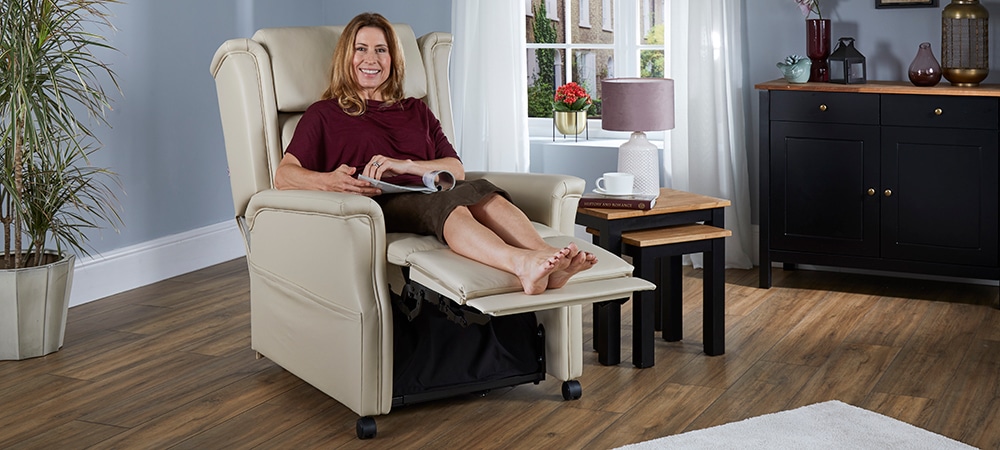
2. Rise and Recline Chairs are comfortable
Secondly, as well as helping you get in and out of your chair with ease, Rise and Recline Chairs provide a comfy and convenient way to help ease the pain of fluid retention, all from the comfort of your chair.
Rise and Recline Chairs allow you to sit back, relax and take any pressure off your swollen joints. Our electric recliner chairs are measured around you and your needs. This means you’ll feel comfortable and fully supported at all times. Resting with your feet up is the perfect position for relaxing when reading, resting or watching TV whilst ensuring optimum comfort.
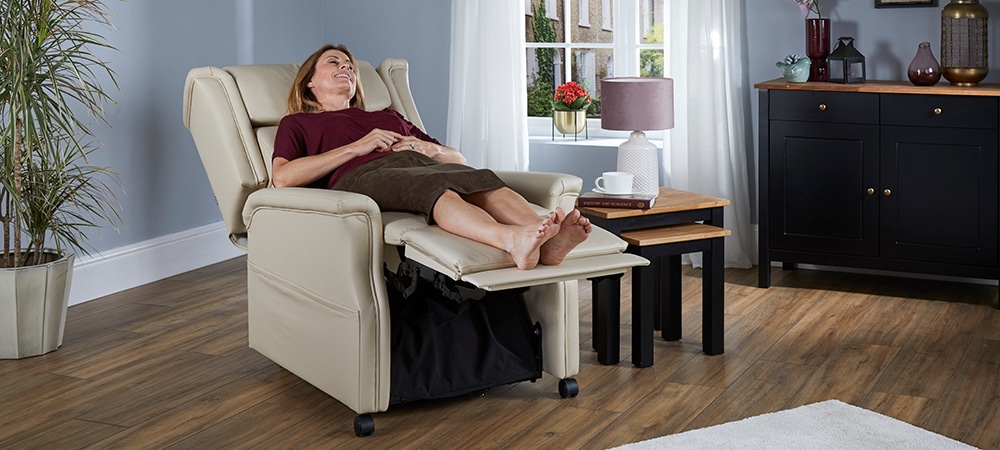
3. Enjoy the benefits of Massage
Finally, fluid retention can be an uncomfortable and painful condition, which can seriously hamper your mobility and ability to get around.
At The Recliner Factory, all of our Rise and Recline Chairs come with the option of adding a luxury inbuilt massage system. This can help to disperse fluid around your body, helping to reduce your swelling and discomfort.
Interested in a New Riser Recliner Chair?
Order a brochure below for more information on our riser recliner range.
If you suffer from poor circulation, there are many unfortunate side effects it can bring. explore the main causes of
If you suffer from fluid retention, Rise and Recline Chairs could provide the perfect answer. There are many benefits that
We know a thing or two about finding the best chairs for people with limited mobility. Here are 5 factors...
Read about whether to choose a power recliner or manual recliner, plus get answers to the most commonly asked questions…

